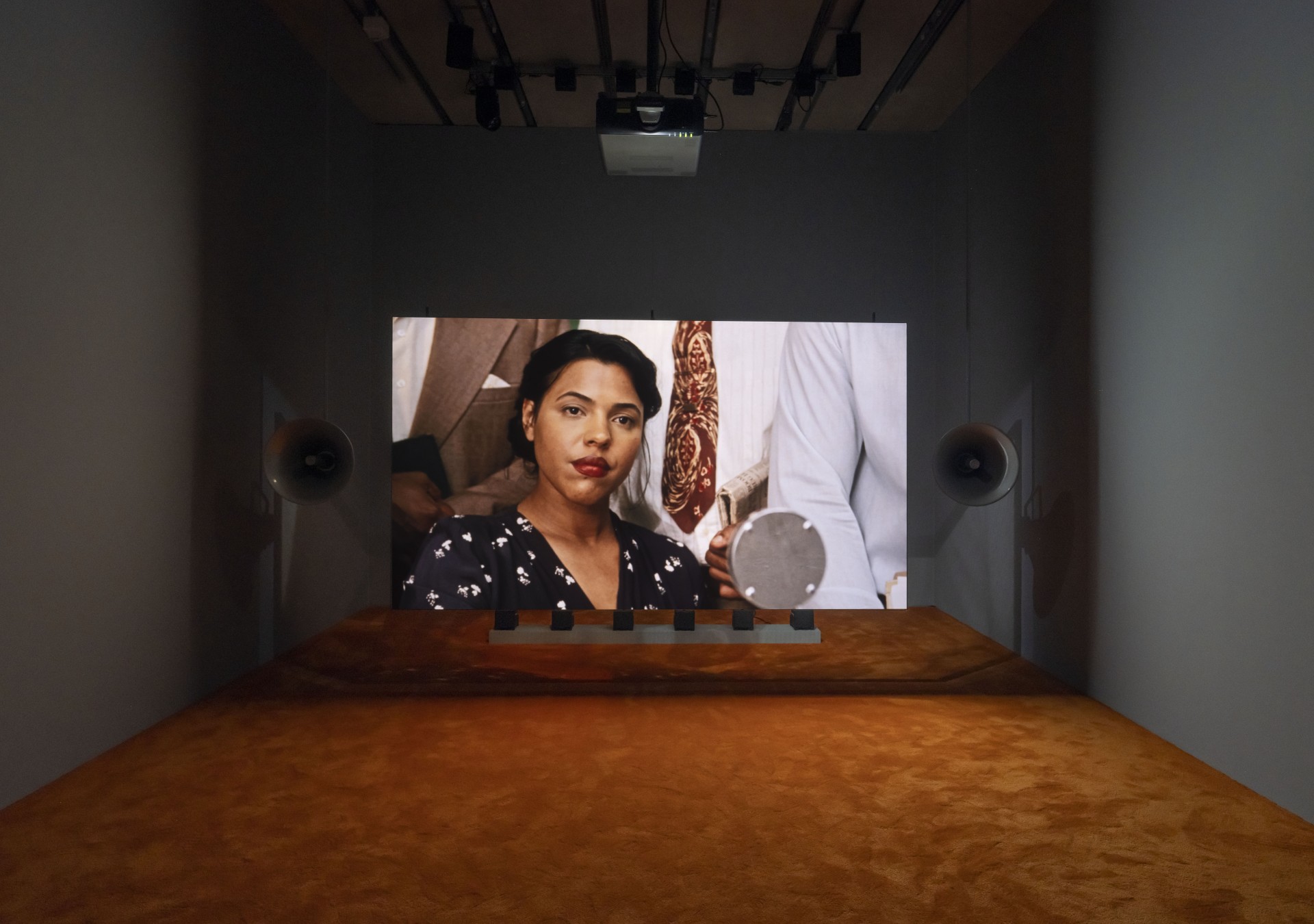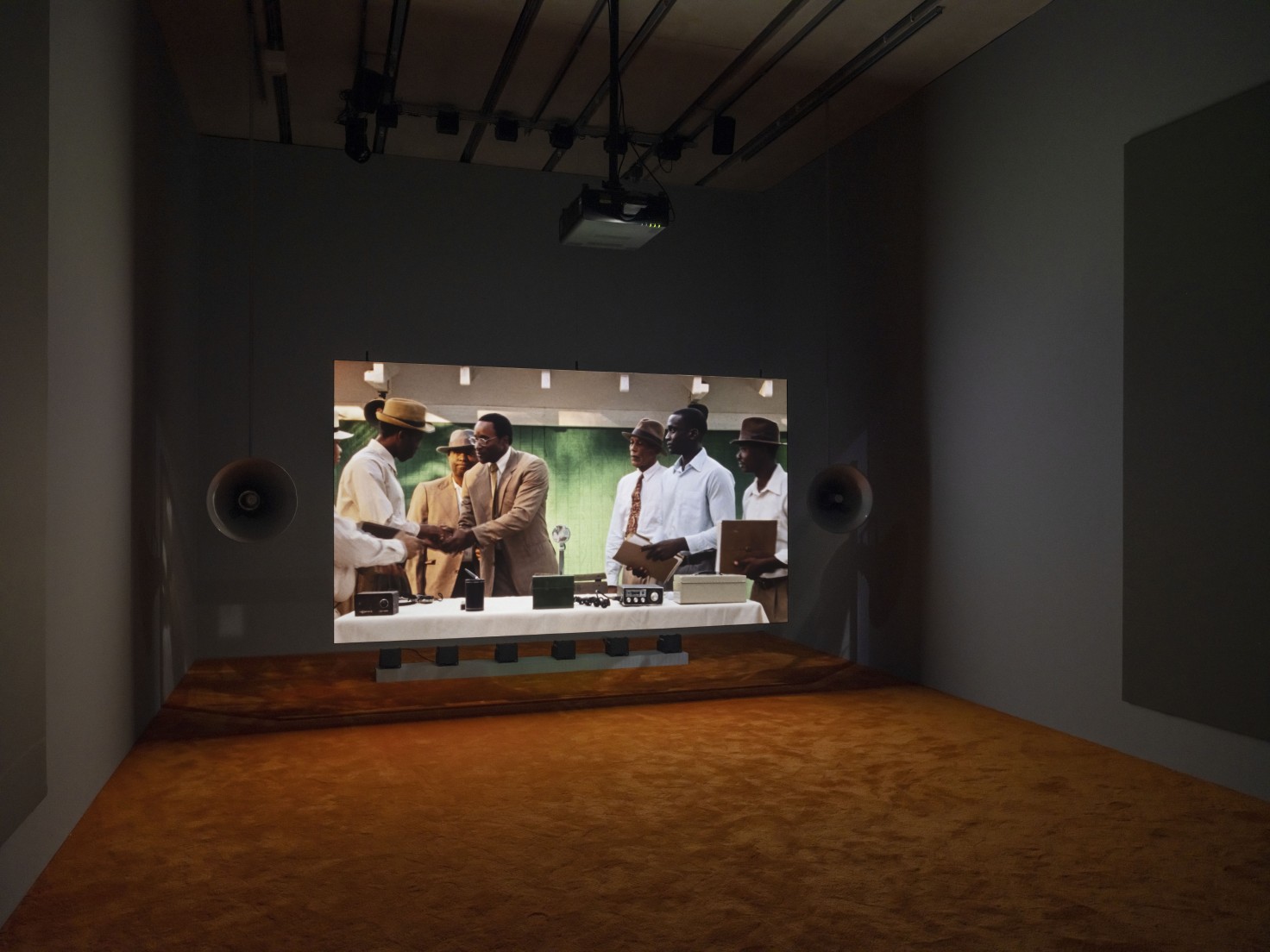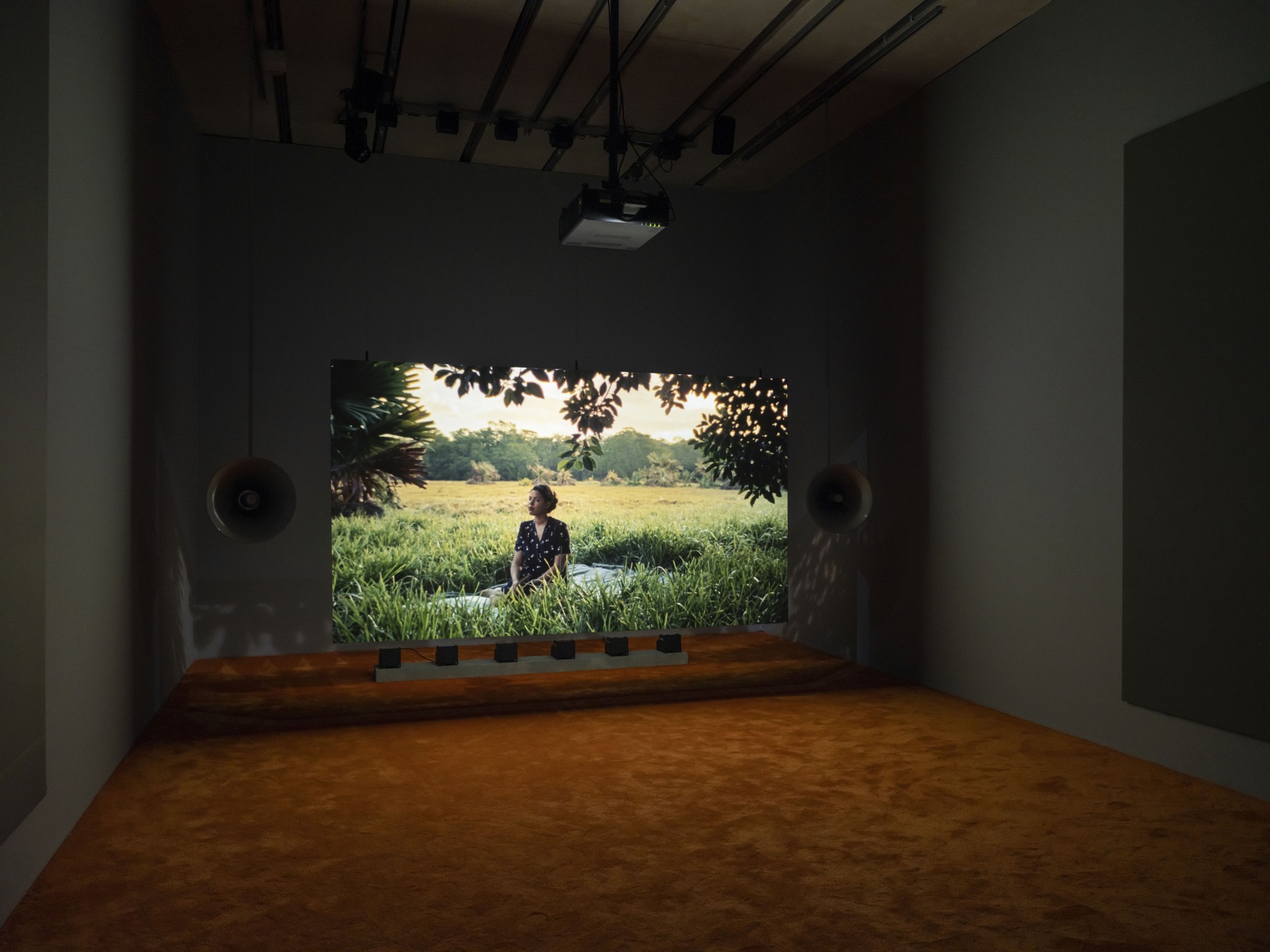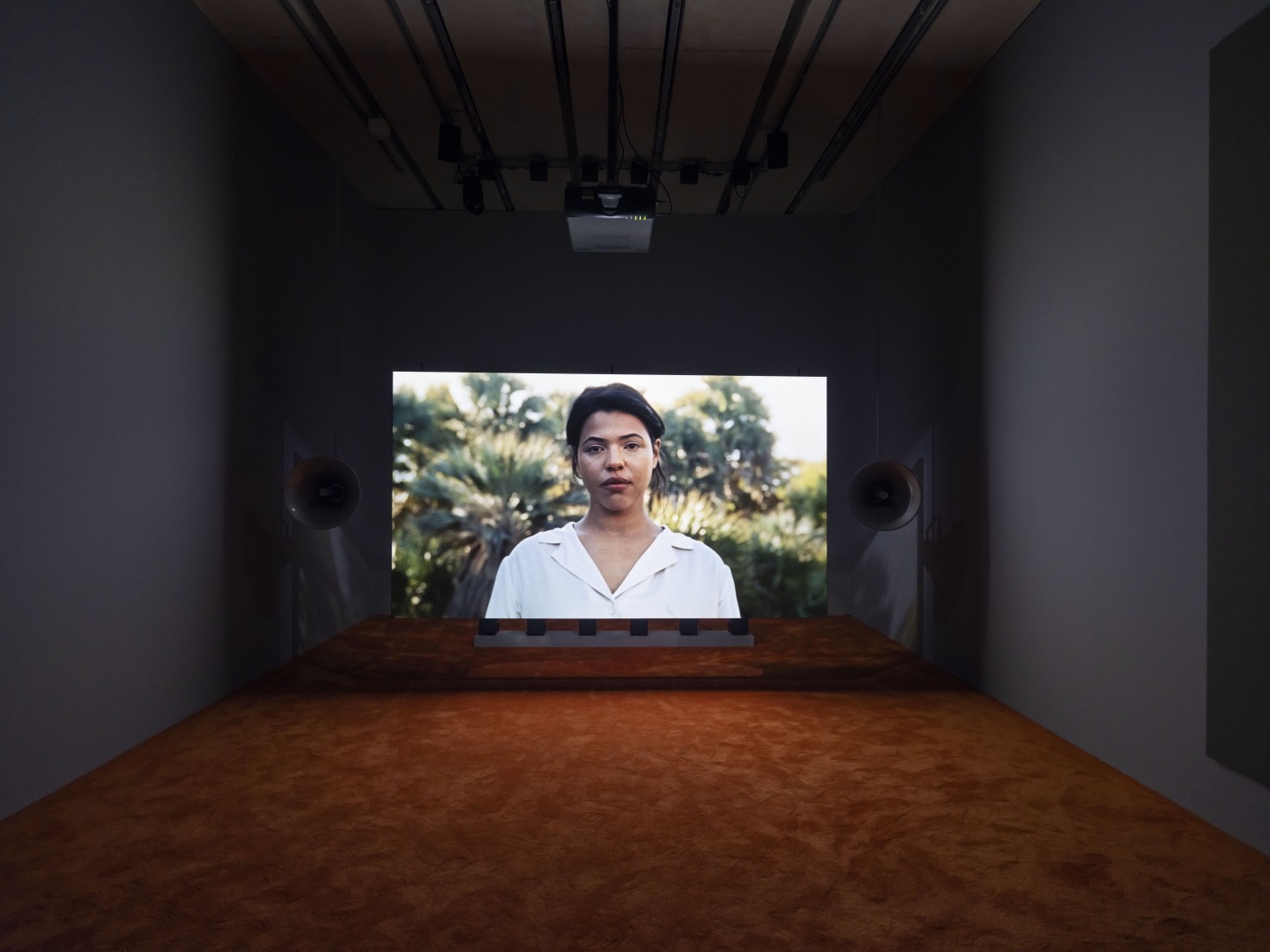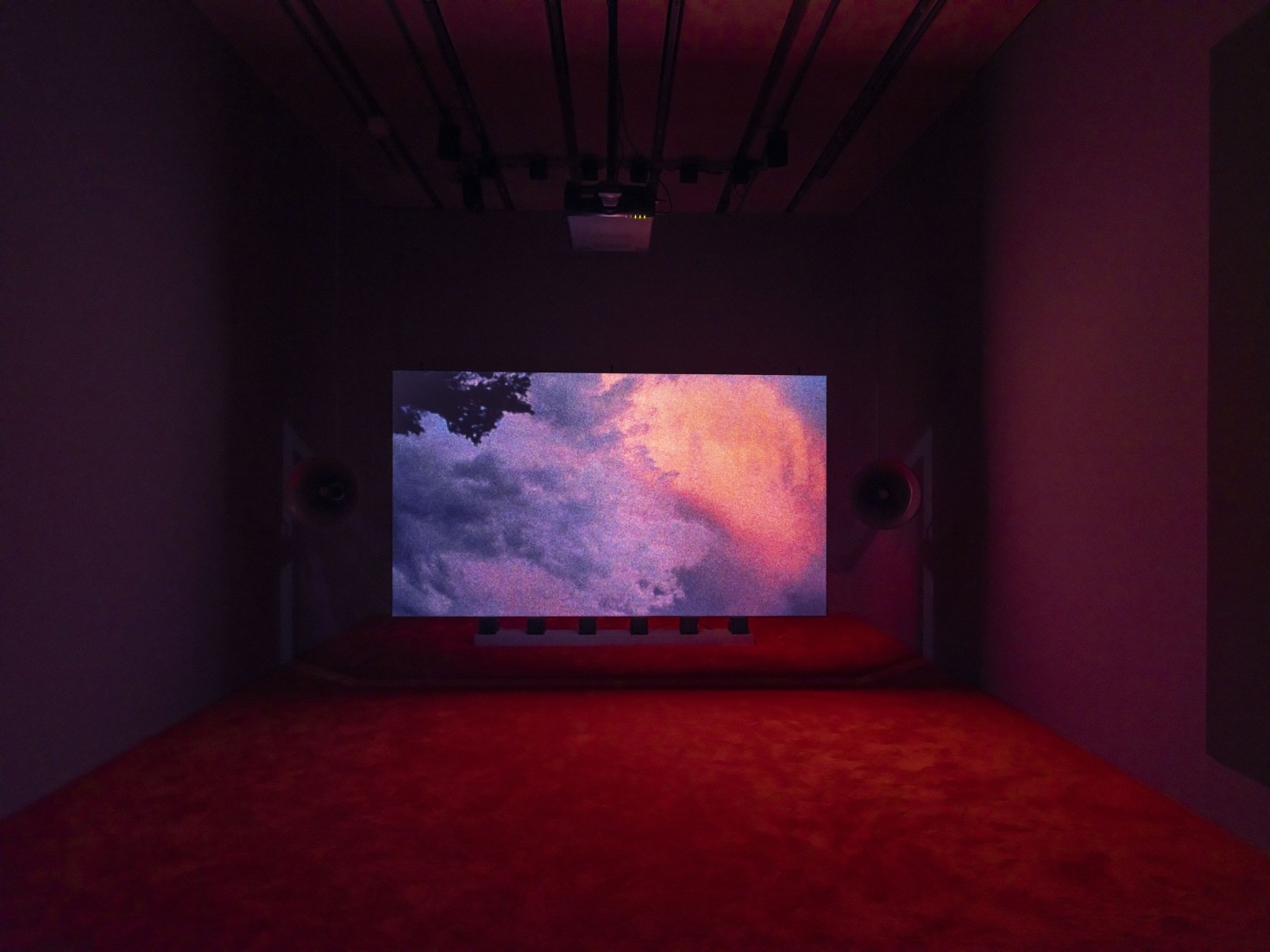As a corrective, Hunt-Ehrlich has taken up a devotional excavation, its ethos embedded in Roussi Césaire’s own knowledge system. This alignment allows the filmmaker to evade the potential danger of salvaging her stifled memory only to subject her to the intellectual or artistic equivalents of the patriarchal and colonialist logics that discarded her. In cinematic terms, such logics could have produced the rigid, invasive absolutism of a conventional biopic. Rather, Hunt-Ehrlich offers an alternative to the normative approach, delicately honoring Roussi Césaire while troubling the very premise of such efforts of remembrance. She resurfaces her subject through a fragmented prism, respecting all the ways she cannot be made fully knowable. Too Bright to See (Part I) invites Roussi Césaire back into the present by becoming a vehicle for her texts, opening up a portal for this never-fully-forgotten Black woman intellectual and artist to be encountered again. As the author writes in a letter written from Haïti to her friend, literary critic and writer Yassu Gauclère, on July 25, 19441, cited almost prophetically in the film:
Hello to the discoverers, for whom this finding will return to objects and beings their authenticity. And I believe that from the moment you take the first step, in desiring to destroy the surface-level skin between you and objects, you will always be able to take the next step, putting yourself at the heart of the poem.
Staying close to Roussi Césaire’s own modes of self-expression, Hunt-Ehrlich’s imaginative recovery articulates an ethical position. While the film creates a verbal collage of transcripts from interviews with her children and secondary criticism, it relies most on the vitality of the writer’s own letters and essays, the latter of which were collected and published in the original French in Le Grand Camouflage: Ecrits de dissidence (1941–1945) in 2009, edited by Daniel Maxim. Roussi Césaire’s writings also dictate the multilingualism of Too Bright to See (Part I), which includes Kreyol in its closing song and is otherwise split between French and English: Roussi Césaire’s words are primarily read in French by actor Zita Hanrot, producing a linguistic alchemy that animates its transcultural and pan-Africanist dimension. Sequenced with shots of a warm peach sun, verdant landscapes, a brief historical reenactment, and even a musical performance, much of the film sees Hanrot gliding across the screen, surrounded by palm trees or sitting on the grass, performing Roussi Césaire’s language. Hanrot appears not so much as an incarnation but a suggestion of the writer, while also playing a fictionalized version of herself as an actor in this role—an essential aspect of the ethics of Hunt-Ehrlich’s method, to openly embrace this elastic artifice.
Martinique is conjured through a substitution, as the film was shot in Miami’s enchanting tree archive at the Montgomery Palmetum & Palm Collection of the Fairchild Tropical Botanic Garden. During a public talk with Curtius, the filmmaker revealed a stunning connection to the poetics and politics of Sarah Maldoror and her 1987 film about Roussi Césaire’s husband, Aimé Césaire, le masque des mots.2 Hunt-Ehrlich situates how her own generative artifice drew on Maldoror’s method of pan-African geographic reordering, scrambling colonial divisions to re-engineer a sense of borderless Black internationalism and global métissage. This form of rearranging joins the braiding of linguistic fragments and gently mesmerizing images that thread the film via a Black, anticolonial rubric.
